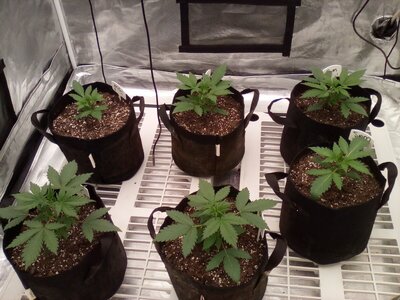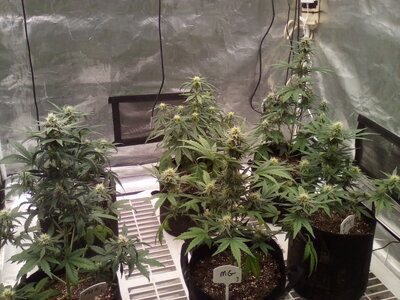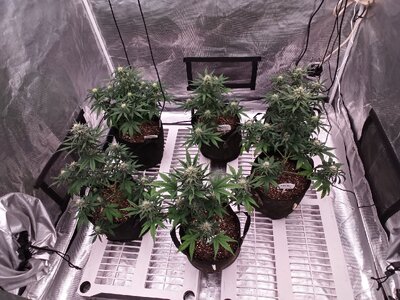I can't advise on the specific readings you are getting.
Photone readings are close enough if calibrated to your specific light, but debatable otherwise. I believe that the problem is that the sensor in the phone does not have the same sensitivity to different wavelengths of light that a proper par sensor does, so it may not detect all the wavelengths that are important for plants, or accurately determine wavelength distribution. When you get a reading off the photone app, you are getting a light intensity reading which, while not measuring par properly, can be used to calculate likely par levels if the app has been calibrated for your specific light. Absent specific calibration, the app has no way of knowing what your specific light is producing that cannot be measured by the phone sensor. Bottom line is that good calibration will mean decent predictions, poor or absent calibration may make poor predictions, and you will have no way of knowing how close they are.
The sensor in a camera reads the entire PAR range but is designed to be highly sensitive to green because that it can properly expose images for humans. Human eyes are very sensitive to green and we are able to discern a huge number of different shades of green.
The purpose of selecting the right light type is that Photone will then apply a conversion factor to the green heavy light reading, which in lux. If the spectrum of the light has a lot of blue, the light isn't putting out as many photons as a light that has a red heavy spectrum.
Photone can give accurate readings, provided that your phone has a similar sensitivity to the sensor for which the software is designed and provided that you choose the right light type and provided that you remember to use the diffuser.
If you don't use the diffuser, you will not get a valid reading. Light meters in cameras are designed to read the light coming directly into the camera lens (some light meters in cameras read only the center 2° or 3° of light.) That's completely wrong when it comes to trying to determine how much light is falling on a plant canopy because, assuming the grow is in a tent, light is coming in from a very wide angle. That's why growlightmeter.com states that you need to use a diffuser and they even sell a clip on diffuser.
If your sensor is not one for which the software is designed, that's another source of inaccuracy. When I test Photone, called Korona back then, I was using an iPhone xsMax and Photone was, consistently, 16% high. When I tested it against a Kind blurple, Photone could not generate a result even though I had selected the blurple setting.
I traded email with the programmer and forwarded him my results. I've been a software engineer for 30+ years, including 3 for Apple and started in photography in the early 1970's so I have some insights into the problem he's trying to solve. What concerned me at the time was that they were not specifying the weight of the bond paper to be used so I tested 20, 22, and 24# paper. Soon after our email conversation, they specified 22# paper.
Photone may work quite well or it may not. I would only recommend that it be used if the phone that you're using is one of the models with which they have tested the software. I would also recommend purchasing the diffuser because putting a strip of paper around the phone is a total PITA. On the other hand, in my testing, it was reading 16% high when compared to my calibrated Apogee against a Growcraft X3 flower light.
While Photone can be useful, I would completely disregard the DLI charts that they display on their website. I contacted them about the source that they use for their recommendations and told me that any citations would be on the bottom of each web page. Last I checked, there were none. That's understandable, frankly, because all research done on grow lighting that crop yield increases in an alos linear manner as light levels increase. There's nothing in "the research" that recommend dropping DLI as the plant matures.
The recommendations of autoflowers were made because, according to the programmer, they consider autos to be always in veg (or maybe it was in flower. It was so absurd that I really don't care to remember.) I've done about a dozen photo and auto grows and, in all cases, I aggressively light my grows.
For my auto grows, after I started learning about how cannabis reacts to light, I would feed them at DLI's of 70 and 80mols. Assuming that your grow is in good shape and that you want a large crop, there's simply no reason not to get cannabis as much light as it can handle, regardless of it being a photo or an auto.
Back to Photone—if you've got a phone that's known to work with their software and if you use the right light setting and if you use a diffuser, it can be a valuable aid.
Parting thought - a light meter (PAR meter) will tell you how much light is falling on the plant. That's helpful for getting the light settings in the general vicinity of where you want them to be. Measuring PPFD is also helpful because it allows you to set light levels for subsequent grows. But measuring light isn't the goal. It's a way of achieving the goal of getting a lot of light on your plants to maximize crop yield and quality. And you can't do that by setting the light levels to a given number on a meter. Instead, the light meter lets you get the light levels about where you think they should be but you've got to watch your plants. A light meter tells you how much light is being generates but only the plants can tell you how much light they can use.
One additional complexity is that if you compare with published PPFD maps, you have to do so in the same enclosure used when making the PPFD map. The size of space being illuminated, and the reflectivity of the walls makes a big difference to ppfd distribtion. And you can't get an appropriate reading with the tent door wide open, you have to take the reading with the enclosure as close to sealed up as you can manage. If I take a reading with my par meter with the drobe door open, the readings are quite a bit lower than with the door nearly closed.
I've taken readings my Gorilla tent with flaps open and flaps closed. When the flaps are closed, there's about another 100µmol falling on a 6" wide strip running across the front of the tent. If you are using a light meter that does not have a wand, you can just add 100µmol but that's where a PAR meter really shines (pardon the pun) because it allows you to take readings throughout the tent with the flaps closed.
If you have access to a par meter, you could calibrate your phone well yourself, but careful use of PPFD maps should get you close enough.
Agreee 100%.
A light meter is an "area weapon" (US Army artillery officer before I took up software). Once you get close with a meter, you adjust fire by watching the plants.





